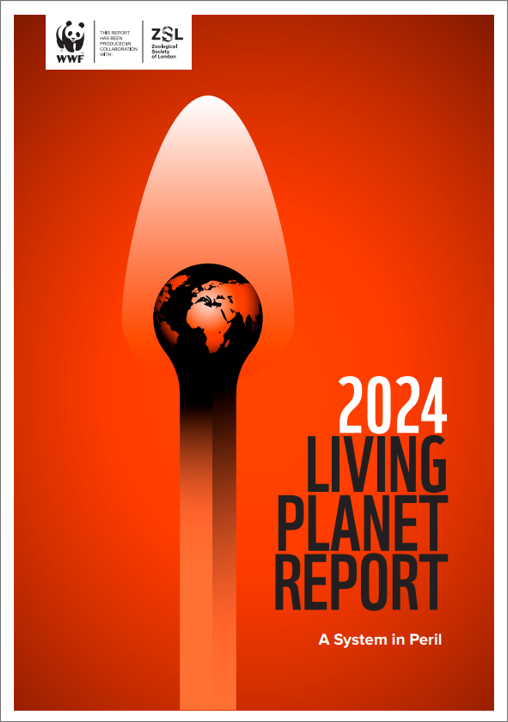□ 보고서에 따르면 5천495개 척추동물종(포유류·조류·어류 등) 3만4천836개 개체군을 관찰해 산정한 '지구생명지수'(LPI)는 1970년과 2020년 사이 73%(통계적 오차를 고려한 범위 67~87%) 감소함. 이는 야생 척추동물종 개체군이 50년간 평균 4분의 3 가까이 줄어들었다는 의미임
□ 생물종별로 ▲담수 생물종은 LPI가 85%, ▲육상과 해양 생물종은 각각 69%와 56% 감소함. 담수 생물종 개체군이 가장 크게 줄어든 것임. 지역별로 보면 한국이 속한 ▲아시아태평양의 LPI가 60% 줄어든 것으로 나타남. ▲'라틴아메리카와 카리브해'(95% 감소)나 ▲아프리카(76% 감소)보다는 감소율이 낮았지만, ▲북아메리카(39% 감소)나 ▲유럽·중앙아시아(35%)보다는 높은 수치임. 동물 개체군 감소 원인은 서식지 손실·훼손, 과도한 자원 이용, 기후변화, 침입종, 질병 등이 다양하게 꼽힘
[출처] '세계 척추동물 개체군 규모, 50년간 평균 73% 줄었다' (2024.10.10.) / 연합뉴스
목차
Executive summary 6
Foreword by Kirsten Schuijt 14
Foreword by María Susana Muhamad González 16
1. Measuring nature’s decline 18
What is biodiversity and why is it important? 19
How do we measure nature? 20
• Nature narratives: using indicators to understand change over different timescales 20
• Nature narratives: from populations to ecosystem function 22
The global Living Planet Index 2024 24
Understanding drivers of change to nature through regional perspectives 26
Case studies 32
2. Tipping points 34
Early warning signals 36
• North America: fire suppression, drought and invasive species 36
• Great Barrier Reef: overfishing, pollution and warming waters 38
• India: wetland loss, drought and flooding 40
Tipping points with global significance 41
A wake-up call 43
3. Global goals and progress 44
Reaching 2030 on the pathway to a sustainable future 46
4. Sustainable solutions 50
Nature conservation 51
• Evolving approaches to conservation 51
• Transforming conservation 52
The food system 61
• Challenges with the current food system 62
• Food system transformation: what’s needed? 65
The energy system 70
• Challenges with the current energy system 71
• Energy transformation: what’s needed? 72
• How do we achieve a transformation that is faster, greener and fairer? 74
Green finance 77
• Financing green 80
• Greening finance 81
5. Making it happen 84
Tracking progress 85
The final push 85
Photo credits 86
References 87
해시태그
AI 100자 요약·번역서비스
인공지능이 자동으로 요약·번역한 내용입니다.




